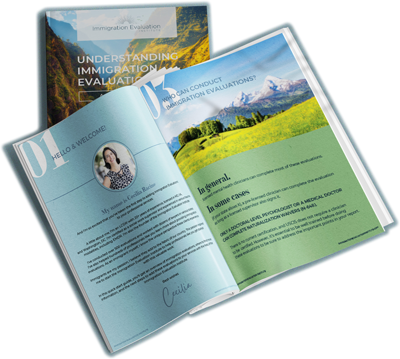What do you want to learn more about?
Celebrating National Hispanic Heritage Month 2023: Recognizing Rich History and Contributions

Hispanic Heritage Month, observed annually from September 15th to October 15th, provides a significant opportunity to recognize and celebrate Hispanic and Latino Americans’ rich cultural tapestry and invaluable contributions to the United States.
This month-long commemoration is a time to honor the traditions, history, and diverse identities that shape the vibrant Hispanic community.
As many of you know, the month is close to my heart, and this year, I wanted to acknowledge it by sharing some of the ways the Hispanic and Latino communities have made incredible contributions throughout our shared histories.
What is Hispanic Heritage Month & How Did It Start?
Hispanic Heritage Month began as a week-long celebration in 1968 under President Lyndon B. Johnson.
The week included September 15th and 16th, which is significant because it is the anniversary of independence for Latin American countries Costa Rica, El Salvador, Guatemala, Honduras, and Nicaragua. Mexico and Chile celebrate their independence days on September 16 and September 18, respectively.
President Ronald Reagan signed the subsequent expansion to a month-long celebration into law in 1988.
The Significance of Acknowledging Hispanic Heritage Month
Acknowledging and celebrating Hispanic Heritage Month is crucial for several reasons:
- Cultural Recognition and Understanding: Acknowledging Hispanic Heritage Month allows for a deeper understanding and appreciation of the diverse cultures, traditions, languages, and histories of Hispanic and Latino Americans.
- Educational Awareness: It promotes educational awareness within schools and communities, encouraging learning about the substantial contributions of Hispanic Americans to the nation’s growth, art, culture, politics, and more.
- Unity and Inclusion: Celebrating Hispanic Heritage Month promotes a sense of unity and inclusion, fostering a more inclusive society that appreciates and respects all individuals’ unique perspectives and experiences.
Hispanic Contributions to the US Throughout History
The Hispanic and Latino communities have significantly contributed to the growth of the USA in myriad ways.
Their contributions encompass enriching the nation’s cultural mosaic, driving economic prosperity through entrepreneurship and labor, bolstering military defense and civic engagement, and advocating for social progress and diversity.
These communities have played an indispensable role in shaping the vibrant and inclusive tapestry of American society:
- Economic Contributions: Hispanic entrepreneurs and business leaders have significantly impacted the American economy, contributing to various sectors, including technology, finance, and agriculture.
- Military Service: Hispanic Americans have shown immense courage and dedication in the US military, serving and sacrificing for the nation during various conflicts and wars.
- Cultural Influence: Hispanic culture has had a profound influence on the arts, music, cuisine, literature, and traditions of the United States, enhancing its diversity and enriching its cultural heritage.
- Political Representation: Hispanic Americans have played vital roles in politics, serving in government positions at various levels and advocating for policies that positively impact their communities and the nation.
Where to Find Out More
For those seeking to delve deeper into the history, culture, and contributions of the Hispanic community, there are numerous resources available:
- Take Part in Mi Parque, Mi Historia: More than 500 years of Hispanic and Latino history and heritage can be found in national parks or shared through National Park Service (NPS) programs and partners in communities across the country. This year, the NPS invites the Hispanic community to share their stories about their local national parks.
- Local Events and Celebrations: Attend local events, workshops, and cultural celebrations organized during Hispanic Heritage Month in your community.
- Libraries and Museums: Explore local libraries, museums, and cultural centers that often host exhibitions and provide educational materials related to Hispanic heritage.
- Online Resources: Visit reputable websites such as the Smithsonian Latino Center, Hispanic Heritage Foundation, and the National Hispanic Heritage Month website for information and resources.
- Books and Publications: Consider reading books authored by Hispanic writers that provide insights into their experiences, history, and contributions.
Hispanic Heritage Month serves as a time to appreciate the diverse and rich heritage of the Hispanic community and the invaluable contributions they have made and continue to make to the United States.
By recognizing and celebrating this heritage, we foster a more inclusive and unified society, valuing the unique perspectives and stories that define us as a nation.

I’m Cecilia Racine, and I teach therapists how to help immigrants through my online courses. As a bilingual immigrant myself, I know the unique perspective that these clients are experiencing. I’ve conducted over 500 evaluations and work with dozens of lawyers in various states. Immigrants are my passion, I believe they add to the fabric of our country.
related articles
Helping Immigrants Find Safety and Healing Through U and T Visas
As mental health clinicians, we possess a unique set of skills that can be a…
Expand Your Expertise: Recommended Trainings for Immigration Clinicians
The Immigration Evaluation Institute Comprehensive course is a great first step into the world of…
Ethical Considerations in Immigration Evaluations
The role of mental health professionals in immigration evaluations is fraught with unique ethical complexities.…
Join the Free
Immigration evaluation
therapists facebook group
Are you a therapist that conducts immigration evaluations?



